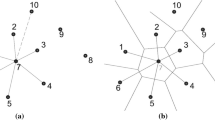Summary
Notch-induced stress concentrations in anisotropic composite materials depend on their directional material properties, especially for uniaxially reinforced composites with high-modulus fibres. The design of notched high-performance composites requires therefore a special proof of their notched strength, which includes the structural parameters of the fibre/matrix combination, fibre orientation and layer arrangement. The assessment of the effects of the finite outer boundary is of practical importance when dimensioning critical notched regions. An anisotropic plate with finite dimensions and a hole in its center will be used here to model stress concentrations. The calculation is based on conformal mappings combined with complex-valued stress functions. The outer boundary is described using point-matching and the least-squares method. The solutions are conducive to the assessment of the essential influencing factors of material properties, geometry and loads. Notched finite plates made of fibre/matrix composites, mainly carbon-fibre reinforced polymers, will be presented as illustrations.
Similar content being viewed by others
Author information
Authors and Affiliations
Additional information
Received 29 June 1998; accepted for publication 22 October 1998
Rights and permissions
About this article
Cite this article
Hufenbach, W., Kroll, L. Stress analysis of notched anisotropic finite plates under mechanical and hygrothermal loads. Archive of Applied Mechanics 69, 145–159 (1999). https://doi.org/10.1007/s004190050211
Issue Date:
DOI: https://doi.org/10.1007/s004190050211




